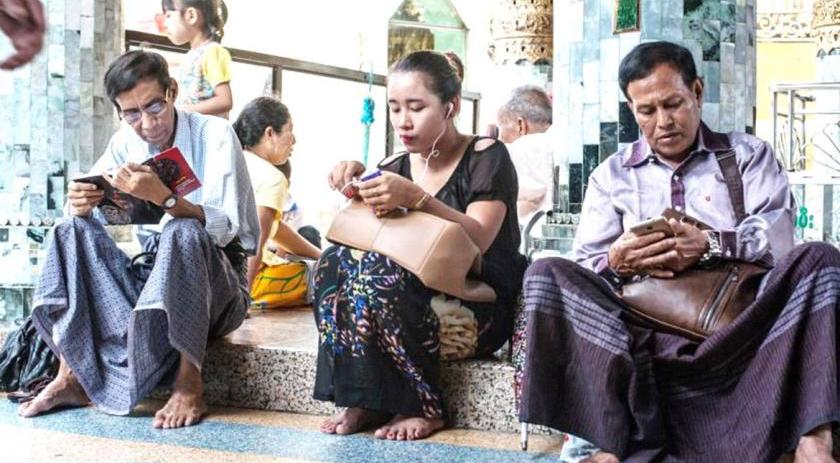
Myanmar has released its official strategy for developing its digital economy over the next six years, according to the Ministry of Planning and Finance.
Published February 26, the Myanmar Digital Economy Roadmap was drafted with a mission of enabling digital transformation, governance, trade and innovation to develop a digital economy and encourage inclusive and sustainable socioeconomic development.
That mission is supported by four pillars, a 6 plus 1 strategy, nine priority sectors, 14 goals, 32 short term action plans and 6 longer term action plans, which include drafting a policy to support digital trade and e-commerce, online payments, tax incentives and cybersecurity. They also include drafting a digital economy development master plan and investment promotion plan.
According to a recent report from We Are Social, Internet penetration in Myanmar rose to 40 percent in February 2019. The report also says that 99pc of these Internet users are mobile.
Many use the Internet to conduct e-commerce transactions. At present, there are estimated to be 220,000 active online buyers in Myanmar. Of them, 1 percent makes online purchases. The market is about 0.07 percent of Myanmar’s GDP, U Myo Khaing Win, deputy director of the Department of Trade, said in Yangon recently.
In view of this, “the government and related organisations are together working to develop the necessary sectors to build a digital economy ecosystem. In this regard, the Digital Economy Roadmap plays a very important role because it proposes implementation plans and goals by timeline,” U Mya Moe Aung, a committee member of the Digital Economy Development Committee, told The Myanmar Times.
The roadmap targets digital advancement in nine sectors: education, healthcare, agriculture, fishery and livestock, tourism and hospitality, manufacturing and small and medium enterprises (SMEs), financial services, technology and the start up ecosystem, digital trade, transportation and logistics.
“The Digital Economy Roadmap aims to develop not only tech start ups and enterprises but also traditional sectors like agriculture and manufacturing. The goal is to raise productivity and competitiveness in each sector and ultimately raise living standards in the country,” said Mya Moe Aung.
“Myanmar is a late bloomer on the digital front so we will leapfrog other economies with available technology. Our country has good potential to ride the digital wave. We can facilitate this by investing more in tech education, skills and by having policies and laws that are supportive of digital developments,” he added.
“In our country, farmers are still using manual labour and animals to work on their fields. They’re not using much machinery yet. Technology needs to be utilised in areas such as agriculture. It must be the government’s first priority to upgrade all sectors using technology. Otherwise, we will be left behind. Another point to highlight is we can’t afford to do it slowly. We have to make it quick,” U Tun Thura Thet, another committee member of Digital Economy Committee, told The Myanmar Times last December.
Under the roadmap, the goal is to raise digital transformation across business sectors by10 pc by 2020 and up to 30 pc by 2025, increase utilisation of digital technologies by SMEs by 20 percent in 2020 and 50 pc in 2025, as well as raise digital financial service transactions to 15 pc in 2020 and 30 pc in 2025.
By 2020 and 2025, mobile subscriptions are targeted to hit 50pc and 55pc of the population, respectively, while the number of Internet users is expected to reach 45pc and 50pc, respectively, over the same period.
Meanwhile, foreign direct investments in the digital economy is estimated to hit US$8 billion and US$12 billion by 2020 and 2025, respectively, up from US$6 billion currently, if all goes to plan.
To support the execution of the roadmap, a Digital Economy Development Committee was formed to establish digital corporations and incorporate digital technology in the agricultural, livestock, and production sectors and SMEs in order to raise their competitive abilities and production capacity, with the goal of increasing national revenue. In addition, citizens from rural areas and the rest of the country will be able to raise their living standards using digital technology, Vice President U Henry Van Thio, said in January 2019.












